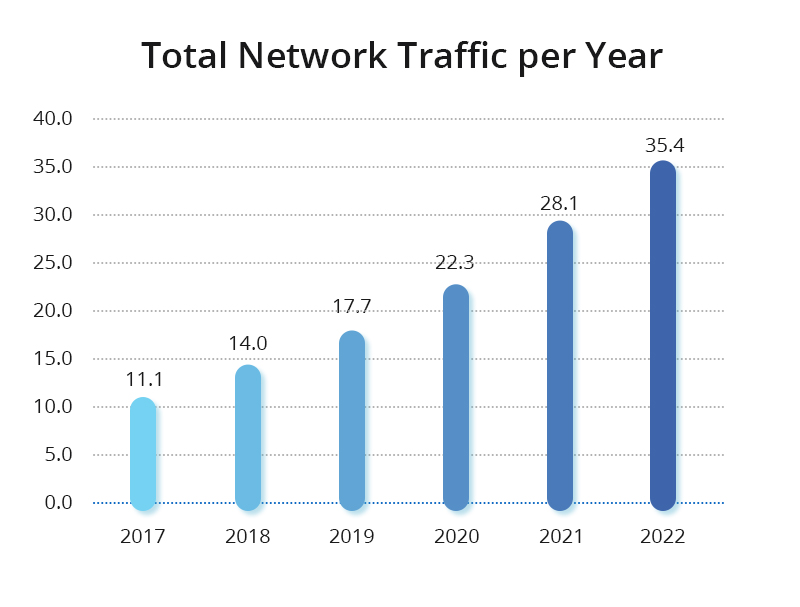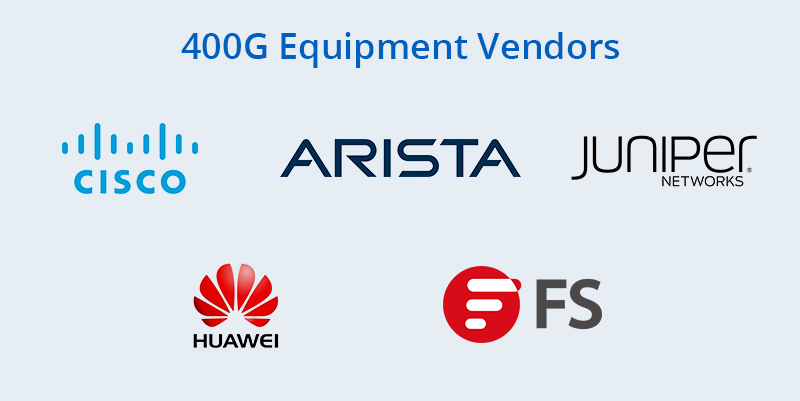
With the explosion of 5G applications and cloud services, traditional technologies are facing fundamental limits of power consumption and transmission capacity, which drives the continual development of optical and silicon technology. Silicon photonics is an evolutionary technology enabling major improvements in density, performance and economics that is required to enable 400G data center applications and drives the next-generation optical communication networks. What is silicon photonics? How does it promote the revolution of 400G applications in data centers? Please keep reading the following contents to find out.
What Is Silicon Photonics Technology?
Silicon photonics (SiPh) is a material platform from which photonic integrated circuits (PICs) can be made. It uses silicon as the main fabrication element. PICs consume less power and generate less heat than conventional electronic circuits, offering the promise of energy-efficient bandwidth scaling.
It drives the miniaturization and integration of complex optical subsystems into silicon photonics chips, dramatically improving performance, footprint, and power efficiency.
Conventional Optics vs Silicon Photonics Optics
Here is a Technology Comparison Chart between Conventional Optics vs Silicon Photonics Optics, taking QSFPDD DR4 400G module and QDD DR4 400G Si for example:

The difference between a 400GBASE-DR4 QSFP-DD PAM4 optical transceiver module and a silicon photonic one just lies in: 400G silicon photonic chips — breaking the bottleneck of mega-scale data exchange, showing great advantages in low power consumption, small footprint, relatively low cost, easiness for large volume integration, etc.
Silicon photonic integrated circuits provide an ideal solution to realize the monolithic integration of photonic chips and electronic chips. Adopting silicon photonic design, a QDD-DR4-400G-Si module combines high-density & low-consumption, which largely reduces the cost of optical modules, thereby saving data center construction and operating expenses.
Why Adopt Silicon Photonics in Data Centers?
To Solve I/O Bottlenecks
The world’s growing data demand has caused bandwidths and computing power resources in data centers to be used up. Chips have to become faster when facing the growing demand for data consumption, which can process information faster than the signal can be transmitted in and out. That is to say, chips are becoming faster, but the optical signal (coming from the fiber) must still be converted to an electronic signal to communicate with the chip sitting on a board deep in the data center. And since the electrical signal still needs to travel some distance from the optical transceiver, where it was converted from light, to the processing and routing electronics — we’ve reached a point where the chip can process information faster than the electrical signal can get in and out of it.
To Reduce Power Consumption
Heating and power dissipation are enormous challenges for the computing industry. Power consumption will directly translate to heat. Power consumption causes heat, so what causes power dissipation? Mainly, data transmissions. It’s estimated that data centers have consumed 200TWh each year — more than the national energy consumption of some countries. Thus, some of the world’s largest Data Centers, including those of Amazon, Google, and Microsoft are located in Alaska and similar-climate countries due to the cold weather.
To Save Operation Budget
At present, a typical ultra-large data center has more than 100,000 servers and over 50,000 switches. The connection between them requires more than 1 million optical modules with around US$150 million-US$250 million, which accounts for 60% of the cost of the data center network, exceeding the sum of equipment such as switches, NICs, and cables. The high cost forces the industry to reduce the unit price of optical modules through technological upgrades. The introduction of fiber optic modules adopting Silicon Photonics technology is expected to solve this problem.
Silicon Photonics Applications in Communication
Silicon photonics has proven to be a compelling platform for enabling next-generation coherent optical communications and intra-data center interconnects. This technology can support a wide range of applications, from short-reach interconnects to long-haul communications, making a great contribution to next-generation networks.
- 100G/400G Datacom: data centers and campus applications (to 10km)
- Telecom: metro and long-haul applications (to 100 and 400 km)
- Ultra short-reach optical interconnects and switches within routers, computers, HPC
- Functional passive optical elements including AWGs, optical filters, couplers, and splitters
- 400G transceiver products including embedded 400G optical modules, 400G DAC Breakout cables, transmitters/receivers, active optical cables (AOCs), as well as 400G DACs.
Now & Future of Silicon Photonics
Yole predicted that the silicon optical module market would grow from approximately US$455 million in 2018 to around US$4 billion in 2024 at a CAGR of 44.5%. According to Lightcounting, the overall data communication high-speed optical module market will reach US$6.5 billion by 2024, and silicon optical modules will account for 60% (3.3% in 20 years).
Intel, as one of the leading Silicon photonics companies, has a 60% market share in silicon photonic transceivers for datacom. Indeed, Intel has already shipped more than 3 million units of its 100G pluggable transceivers in just a few short years, and is continuing to expand its Silicon Photonics’ product offerings. And Cisco acquired Accacia for US$2.6 billion and Luxtera for US$660 million. Other companies like Inphi and NeoPhotonics are proposing silicon photonic transceivers with strong technologies.
Original Source: Silicon Photonics: Next Revolution for 400G Data Center










